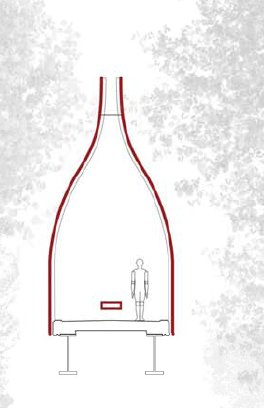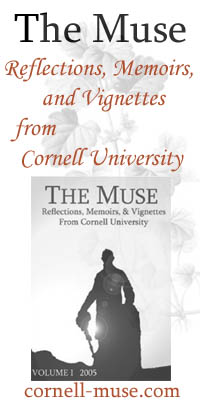Love them or hate them, and I'm thoroughly conflicted, the University released a pile of useful information meant to inform the gorge fence debate yesterday. Sifting through the consultant reports and schematic diagrams, there are a lot of very useful data presented, including bridge spans and heights. Did you know that the Thurston Avenue Bridge is 235 feet long, spanning a drop of 112 feet into the Fall Creek Gorge? There are also neat mock-ups of what certain bridges would look like. Here, for instance, is the Fall Creek Suspension Bridge:

Taken in total, the reports reflect an exhaustive look at the University's approach to dealing with the gorge suicide issue. It provides a thorough review of the literature and an argument against the 'substitution suggestion', or that suicidal individuals restricted from bridge jumping will just take their life in a different fashion:
Method restriction at a particular site may still be justifiable even as substitution may evolve over the course of time. When assessing the safety standards of any structure, it is important to ascertain the level of risk to public safety that a structure poses and to impose appropriate safeguards if the risk is substantial. If it becomes apparent that some specific feature of the social or physical environment facilitates or encourages suicidal behavior, we would argue the ethical imperative of removing access to that feature even when it is not possible to guarantee that substitution will not occur.
It also makes the lurking legal liability argument, which while cynical, is an altogether reasonable rational for the University to follow the fences route::
There are an increasing number of studies which show that barriers, safety nets and muted media reporting are effective in reducing and preventing suicides by jumping from specific sites, and further, that there is no evidence of transfer to other sites and some evidence of a decrease in suicides by jumping in the surrounding area. These findings suggest that these approaches are now moving towards becoming best practice in suicide prevention. In turn, the development of best practice guidelines for preventing suicide by jumping raises important issues about the accountability and liability of authorities with responsibility for bridges, structures and sites from which people jump. Recent years have seen an increased awareness of patient rights and increasing litigation over failure to protect the public from risk. Growing awareness of the fact that suicide mortality and morbidity may be reduced by appropriate barriers could well, in the future, become further grounds for consumer-led litigation.
But I think the strongest argument comes not from the University's consultants but from a senior, Deirdre Mulligan, who lost one her friends, Matt Zika '11, in the string of tragedies last spring. As she wrote in the Sun yesterday:
But I love the fences, and I haven’t talked to a single person who was as close with Matt as I was who isn’t also thankful for them. For me, and for anyone else who lost a friend to suicide, it does not take the sight of a fence to bring to mind last year’s suicides. There is not a day — not an hour — that goes by that the sadness, guilt, loneliness, regret and every other unavoidable emotion that comes with the loss of a close friend doesn’t overwhelm me.So yes, I love the fences. If a sticker I saw today on the Collegetown Bridge is to be believed, “The fences saved someone’s life over the summer.” The sight of a fence could never, ever be as painful as reading ignorant and hate-filled words on a bridge telling suicidal people that they deserve to die.
She ends fittingly:
The sight of a fence could never be as painful as the sight of your best friend’s tombstone.


